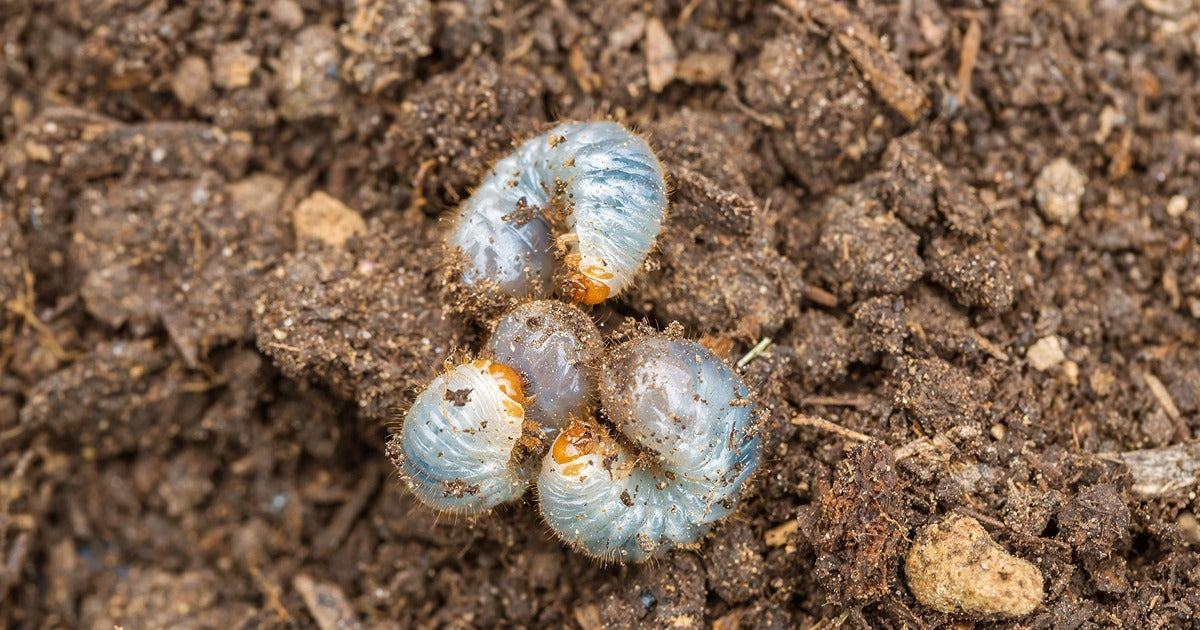
Leatherjackets & Chafer Grubs Were Identified Close To Soil Surfaces This Winter
In mild winters turf pests, such as Chafer Grubs and Leatherjackets, may not sink very low into the soil structure, as they would normally do in harsh or typical winter conditions. This certainly appears to have been the case this past winter across some parts of the U.K. Dragonfli customers from the South West reported sightings of Leatherjackets close to, and on, the soil surface, with some gardeners identifying particularly large pest populations. In other areas Chafer Grubs were also been spotted close to soil surfaces in December.
We Could See A Quicker Emergence Of Turf Pests This Season
The implications of this could mean that, as the pests are not located very far down in the soil structure this year, where they normally would be, they could reappear close to the surface to feed on grass roots much earlier than normal. If the mild winter is followed by a mild spring, this too could speed up the life cycle of these turf pests.

Turf pests, such as these Leatherjackets, could become active and start to eat grass roots sooner than usual due to a mild winter.
Exclusive Availability Of Dragonfli Nematodes To Combat Spring Turf Pest Generations
Nematode applications against Chafer Grubs and Leatherjackets are typically carried out in the summer, when the next generation of turf pest larvae are present in the soil. This is because soil temperatures are higher at this time, which provides better conditions for nematode activity, and also as the larvae will be smaller and more easily penetrated by the nematodes.
When faced with overwintering populations of Chafer Grubs or Leatherjacket Larvae, however, the instinct to try and control this generation now, and prevent any further lawn damage, can be overpowering! For this reason we are letting customers buy nematodes for spring treatments for the first time. We are only supplying one particular species of nematode, however, which is more tolerant to cooler temperatures. This is the Steinernema feltiae species, which are active from soil temperatures of about 8-10°C and upwards. The feltiae nematodes will attack both Chafer Grubs and Leatherjackets.


For the first time Dragonfli will be offering Chafer Grub & Leatherjacket Killer Nematodes for spring generations of turf pests.
Do Not Expect To Quell Infestations Now, A Summer Treatment Will Still Be Required
If you are able to successfully apply the nematodes when soil temperatures reach at least 8-10°C, then a percentage of the grubs and larvae can be killed. The nematodes will most likely be less effective compared to when used in summer applications, though. When treating large populations of turf pests, you will almost certainly need to apply nematodes against the next generation in the summer.

Feltiae nematodes will kill off some turf pests if applied in soil temperatures of 8-10°C & upwards, though better results will still be found when applying nematodes in the summer.
Tips To Remember When Applying Nematodes Again In The Summer
For Chafer Grubs, this summer generation will normally appear from the end of July to October, and the Leatherjackets will emerge from the end of August until October. Keep checking your lawns in the summer for grub activity, as the sooner you can apply nematodes against the first small grubs, the better. The other key factor to remember is to allow for plenty of moisture and water on treatment. Nematodes work much better in damp, moist conditions, so ensure to apply them with lots of water and apply on dull days, as nematodes are U.V. sensitive. Try to keep lawns moist after application for at least 5-7 days. Nematodes provide a safe, natural solution against turf pests but you do need to apply them in the appropriate conditions, and be prepared to carry out regular treatments.


Nematodes can devastate turf pest populations when applied in the appropriate conditions. See above the gradual disintegration of some Chafer Grubs when infected by nematodes.




